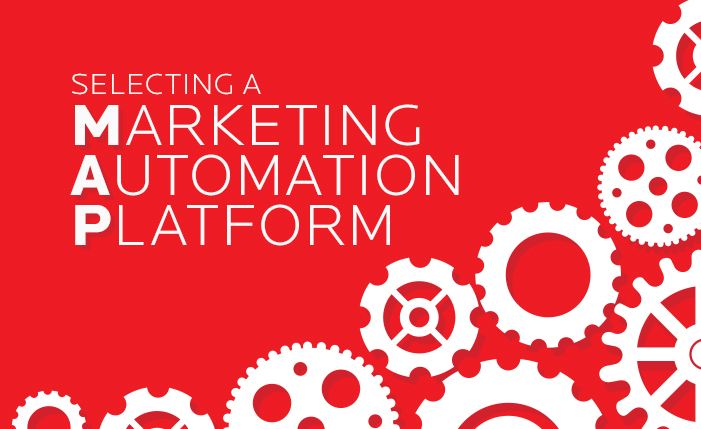
Let’s pretend you’re in the market for a new jet pack. (Aren’t we all?)
You get emails from two competing jet pack brands in the same day. One is addressed to you by first name and includes contact information for your local retailer, with a nod to your recent viewing of a video sent in a previous communication.
The other email is a monthly update of product news, addressed to ‘Valued Customer.’
People expect messages to be targeted to who they are as individuals, where they live, and what products and services they use. It’s not a matter of B2B or B2C; it’s connecting with people through personalized and direct marketing.
Marketing automation technologies allow you to use data to deliver the most-relevant content, tailored for each contact, with impeccable timing.
By leveraging information in your database to attract qualified leads and empower your sales team, marketing automation increases efficiencies and drives revenue.
It’s using technology to build relationships, not eblasts.
Why marketing automation?
More than just email, marketing automation integrates and streamlines digital marketing efforts such as online lead generation, data-driven email marketing, and measurement and optimization.
The result? More qualified leads, increased conversion rates and better sales/marketing alignment.
- Reach target audiences directly through the digital media they use most often while building a marketing database of qualified buyers.
- Segment, nurture and score contacts based on their profile data and behavior, delivering relevant information at the right time to turn leads into customers.
- Get better insight into the ROI of each marketing campaign through actionable data to optimize the sales pipeline, improve efficiency and enable closed-loop reporting.
Shiny objects: features and functionality
Marketing automation technology enables integrated strategies and tactics that fuel the revenue cycle. 
Key features of leading marketing automation platforms (MAPs) include:
- Database and data management (segmentation, integration and analytics)
- Automated workflows
- Email, landing pages and Web forms
- Lead nurture campaigns
- Lead management (lead routing and scoring/prediction)
- Sales process integration
- Reporting, analytics, and dashboards
- Customer relationship management (CRM) integration
Finding the right fit
With all the promise of marketing automation, implementation is a big commitment. Not to mention maintenance.
Successfully implementing marketing automation technology requires ongoing content strategy. Other considerations for selecting a MAP include:
- Does the technology meet business objectives, both now and over the next three years?
- Does it offer multichannel functionality (Web, email, social and SEM)?
- How will key features and functionality be used?
- Does it support existing business processes?
- Is CRM integration possible?
- What analytics are provided?
- What level of customization is available?
- What kind of technical support is offered?
The most common constraints for organizations considering implementing a MAP are budget, time and skilled resources.
Before planning your MAP implementation, it’s important to understand how your business will most benefit from its features and functionality.
5 tips to get the most out of marketing automation technology
- Combine your data. Marketing automation requires centralizing different data sets to deliver personalized, relevant content at the right time. Rules, triggers and automated workflows simply will not be able to function without standardized data.
- Evaluate your sales cycle. The length and complexity of your sales cycle is a good gauge for the level of sophistication and depth of functionality needed in a MAP.
- Consider your goals. Before starting a technical evaluation of MAPs, it’s important to know how your business will use the technology and to map out a few basic processes before entering the sales cycle with a solution vendor. This technology isn’t cheap, so don’t buy it and then spend three months in implementation planning without ever logging in.
- Assess your current technologies. Consider other marketing and contact management technologies already in place. Is there a CRM and, if so, will it integrate with the MAP? How are leads currently captured from your website, and where are those leads stored? What analytics packages are already being used? Will the MAP replace existing processes and technologies, or complement them?
- Don’t let technology dictate your strategy. Always make technology decisions based on business objectives and required functionality.
Wondering what MAP might be the right fit for your business? Or where to start with your implementation plan? Let’s chat.
